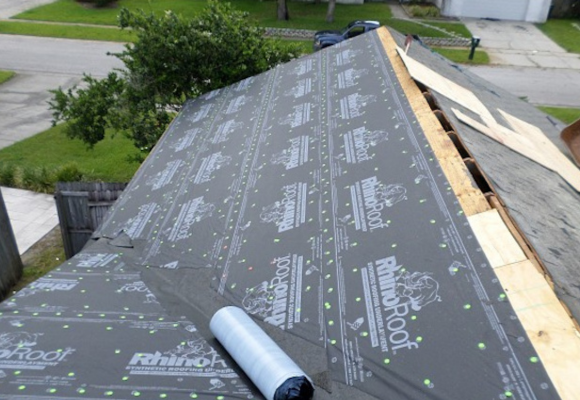Regarding roofing felt, it is more than simply a protective covering beneath the tiles.
Selecting the proper type of roofing felt for your project to achieve the best performance and lifespan is critical.
One of the most important choices is whether to opt for roofing felt 15 or 30, but how to choose one? Any ideas?
No worries, try figuring out the major differentiation factors for roofing felt 15 vs. 30 and find out which is best. Both solutions offer advantages and disadvantages, and deciding which one might be difficult.
Other elements to consider are the roof and your budget.
Roofing Felt 15 Vs 30- Quick Answer
Choosing between roofing felt 15 and feeling 30 might be difficult, but this helpful guide explains the distinctions and helps you pick the best solution for your roofing needs.
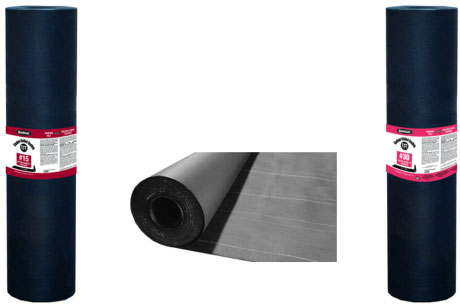
The weight, roof slopping, durability, lifespan, rip resistance, protection, and waterproofing are the primary differences between roofing felt 15 and 30.
Climate, roof design, existing roofing material, and budget all play a role in selecting the best roofing felt for your project.
Finally, choosing the perfect roofing felt will ensure the best protection for your roof and property.
Roofing Felt- Brief Info
When protecting your roofs, you might come across a term like roofing felt, but what does that mean, and how does it make sense to select the right one for your house?
Roofing felt is considered a paper tar composite of multiple materials, including fiberglass or polyester.
These are deemed synthetic forms, while on the other hand, if you go with wood cellulose, it results in a natural felt.
Both are used as felt roofing combined with bituminous that ends sup final form, considering it rolls for opting in roof construction and adding between roofing layers for advanced protection against moisture, fire, and many more.
The felt is securely placed between roof shingles and the deck, promoting safety.
Selecting the proper roofing felt will keep the roofing safe and make the house appear more aesthetic with desired safety features against any harmful case like fire, etc.
Differentiation factors for Roofing Felt 15 vs. 30 (Detailed comparison)
You’ve probably heard of roofing felt 15 and roofing felt 30 if you’re going to construct a new roof or repair an old one. But what’s the distinction between the two?
Which should you choose? What are the things that distinguish them? This post will review the differences between roofing felt 15 and 30, answer some often-asked questions, and recommend an appropriate option.
Factors of Distinction
A. Roofing felt weight
To differentiate roofing felt 15 vs. 30, it’s pivotal to know that significant comparison factors become its weights because the numbers 15 and 30 indicate the overall weight of the felt that would ensure the protection strength.
Roofing felt 15 refers to 15 pounds per square inch thick felt, while roofing felt 30 is 30 pounds per square inch thick felt.
The higher the weight, the broader and more durable the roofing felt.
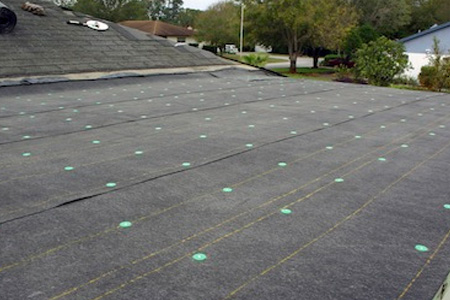
As the roofing felt 30 is more weighted, it’s better to opt for areas with harsh conditions like excessive rains, winds, and hail storms, preventing roof damage and keeping them waterproof.
So, regarding advanced safety and high weight, the roofing felt 30 is the ultimate winner, but in mid-weather regions, using 30 lb. can be costly because there isn’t any harsh weather; choosing 15 pounds of felt will be a great choice.
B. Roof sloping
You should use appropriate felt paper based on the roof slope and shingle weight to protect your roof fully. Roof felt 15 suits shingles weighing 240 lb. square feet.
If the roof’s slope exceeds 4:12, a single layer of 15lb felt paper is sufficient for appropriate water drainage. Offer protection to a roof slope of 3:12 to 4:12, using two layers of 15 feet recommended.
On the other hand, the 30 lb. felt is used for roofs with a pitch of 3:12 or less for more than 240 lb. per square foot singles.
C. Durability
After comparing weight and roof sloping requirements, knowing which roofing felt offers a more durable and long-lasting nature is pivotal.
Durability is essential because placing protective layers should last longer; changing them after frequent damage might cost a lot.
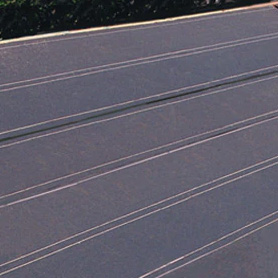
Roofing felt weighing 30 pounds is more durable than roofing felt 15, which is why, compared to the roofing felt 15, it can handle solid weights and prevent ripping, making it excellent for places with severe winds, hail, or other extreme weather.
D. Longevity
Durability and longevity go side by side. The felt weighing heavy are durable and are also long-lasting than ow weight felts.
But choosing any should be based on environmental factors because sometimes heavy felt might be just adding advanced protection that can be covered with roof felt 15.
However, if living in extreme climates, check out the longevity factor. How long will both roofing felt last any idea?
To know the exact figure, you should know that the 30 pounds handled will last long, protecting roofing for up to 30 years with a lifespan of 20-30 years.
On the other hand, the 15-pound roofing felt last least than the 30, with a life span of around 10-15 years.
E. Waterproof
Thanks to their build and composition, both felt offer water resistance and keep the roofing sage from moisture damage; however, the resistance is offered in different strengths.
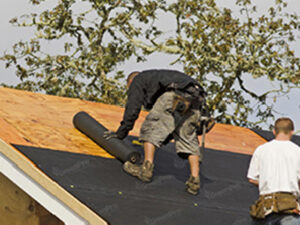
Both roofing felt are water-resistant, but roofing felt 30 gives more protection.
Thick felt is favored in humid regions since it may keep your roof leak-free for extended periods.
The heavier the roofing felt, the more advanced protection it offers, so to get high water resistance, go with roofing felt 30 weight 30 pounds, durable and long-lasting.
If you are living in areas with less rainfall and want affordable roofing felts go with the 15-pound ones.
F. Ventilation or roofing breathability
Some owners require breathable roofing felt, while, at times, the need is to go with less breathability. How to know which felt offers how much ventilation?
The heavier the weight, the less ventilation it provides, and vice versa. Roofing Felt 15 improves ventilation around the roof, enabling airflow to keep your attic cooler.
Compared to roofing Felt 30, it’s nevertheless less breathable than roofing felt 15, offering less ventilation. So, if you require more breathable roof protection, go with the roofing felt of 15 lb rather than 30.
G. Tear resistance
Did you know that not all felt paper is equal regarding rip or tear resistance? While both 15 and 30-felt sheets can rip, to be more precise, the 30-felt is significantly more tear-resistant than the 15 lb. roofing felt.
That is why 30 felt seems an excellent roofing felt for protecting your roof from all types of wear and strain.
If you’re concerned about losing your roofing shingles during a severe storm, 30-pound felt will hold up well and avoid ripping.
So, if you value your home’s protection and security, 30 lb. felt will go along more securely. Remember to position your shingles as soon as possible after laying down the underlayment.
Otherwise, you run the danger of exposing the underlayment.
Final Thoughts
We hope you get an idea for roofing felt 15 vs. 30 and can easily choose the one you need.
Roofing felt is paper tar used as a composite of many materials to protect roofs against moisture, fire, and other problems.
The most typical roofing felt thicknesses are 15 and 30 pounds per square inch, providing more protection against extreme weather conditions.
The roof’s slope and the shingles’ weight determine the type of roofing felt used.
Roofing feeling 30 is more resilient and long-lasting, lasting up to 30 years, as opposed to 15-pound roofing felt, which only lasts about 10-15 years.
The thicker the roofing felt, the less ventilation it gives, but the better the water and tear resistance.
Finally, choosing the suitable roofing felt will protect both the roof and the property.
Frequently Asked Questions
Is roofing felt considered waterproof?
The beauty of roofing felt is that it is designed that prevent moisture absorption and keep moisture free from any moisture entrapment or make them damage free from moisture.
It acts like a protective barrier between roofing layers and ensures the roofing is waterproof, especially on plywood, etc., before installing the shingles.
With roofing felt, you get additional protection between the substrate layer and the roofing finished surface. It protects roofing from harsh weather, fire, heavy wind, rain, and snow.
Can I use 15 lb. felt roofing instead of 30lb?
As you know, two-felt roofing is based on their weight, but selecting the right one can be beneficial in specific ways.
If you want to use 15 lb. instead of 30, you can use it. However, technically speaking, roofing felt 30 is more suitable for places prone to severe winds, heavy storms, or massive hail formations, whereas roofing felt 15 might offer less protection.
If you live in areas with harsh climatic changes in wind and sand moisture, selecting the 15 might be less protective, so choose the heaviest as per the weather conditions and house roofing requirements.
How are different varieties of roofing felt sold?
Roofing felt is usually supplied in 100-square-foot or 400-square-foot rolls with 15lb. And 30lb. Variants are widely accessible on the market both online and offline.
Measure your roof surface and then choose the quantity as per roof demands.

Arthur is a skilled roof worker with over 10 years of experience in the industry. He started his career as an apprentice and worked his way up to become a foreman.
When he’s not working on roofs, John enjoys with his family or writing posts. He is also a passionate cyclist.

